#Queen josefina of Sweden
Explore tagged Tumblr posts
Text
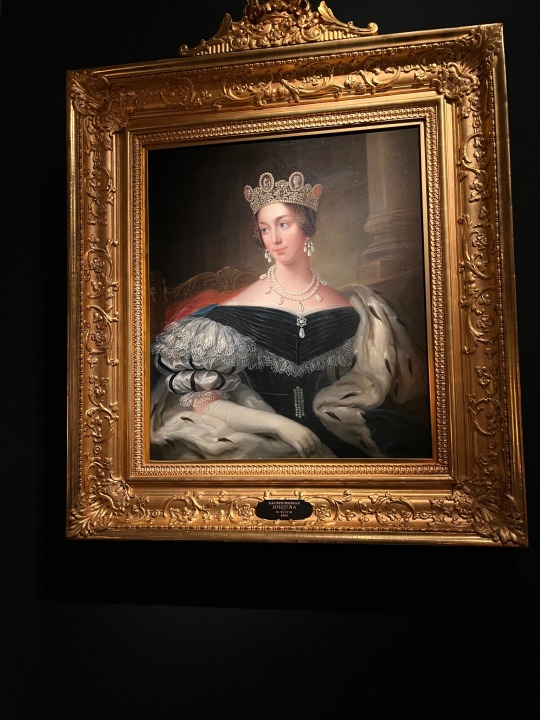
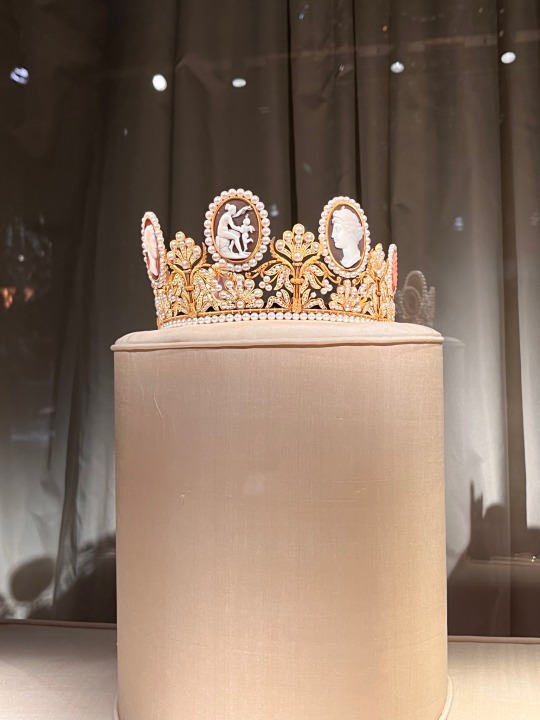






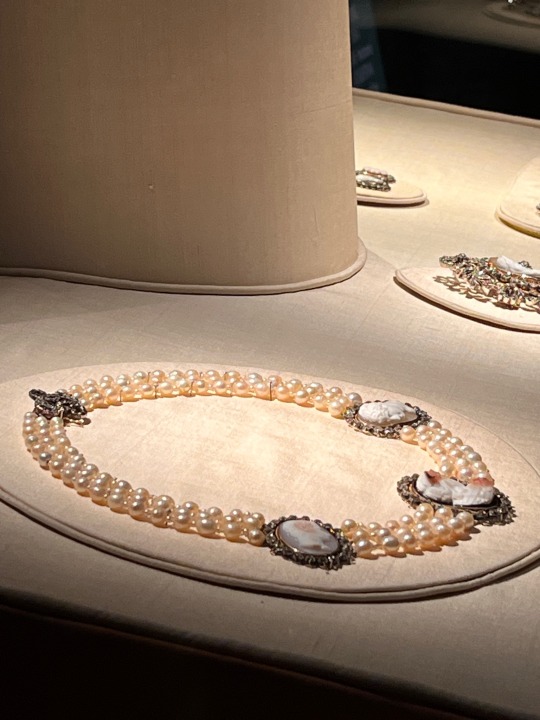

I got to see the Swedish Cameo Parure in person this week. It is on display at the Vasa to Bernadotte, 1523 -1973 - 2023, exhibition at The Royal Palace in Stockholm, Sweden.
#swedish royalty#swedish monarchy#swedish history#swedish royal family#Swedish tiara#tiara#cameo tiara#napoleonic tiara#royal tiara#Vasa to Bernadotte#Queen josefina of Sweden
12 notes
·
View notes
Text




Queen Mary wore one of the two square brooches and a shortened version of the diamond chandelier earrings to the New Year's Reception at Christiansborg Palace on 7th January 2025.
The two square brooches with diamonds, set in silver and gold, are so-called shoulder brooches, intended to be worn on the shoulders, but today are worn freely wherever it suits. The two brooches, made around 1840, presumably for Queen Josefina of Sweden, may also be part of Josefina's inheritance from her sister, Empress Amélie of Brazil. Dowager Queen Josefina let her granddaughter, Crown Princess Lovisa of Denmark, inherit them, and they were then transferred to the Danish Royal House's Property Trust.
#queen mary#danish royal family#royaltyedit#royal fashion#jewellery#danish new year#danish ny 2025#mine
32 notes
·
View notes
Text
so many odd and wonderful thing seem to find their way into Denmark.
For example, I once came across Josephine de Beauharnais Jewelry in none other than the Danish royal Property Trust.

the story behind how it got there isn't unique to these piece specifically, but it definitely jumped around. "the two bracelets were inherited by the principal figure of one of the bracelets, the son Eugène. After his death, the bracelets were passed on to his second-oldest daughter, Amélie, who was married to Emperor Dom Pedro I of Brazil. The Emperor and Empress died without surviving children, so, upon Empress Amélie’s death in 1873, the bracelets went, together with, among other things, the Brazilian diamond frame, to Amélie’s older sister, Queen Dowager Josefina of Sweden. From her, it passed on to her granddaughter, Swedish-born Crown Princess Lovisa of Denmark, who was married to the Danish Crown Prince Frederik (VIII)."
#Hopsters random finds#historical#personal#Denmark#art#jewelry#josephine bonaparte#napoleon bonaparte#eugene de beuharnais#will tag later
10 notes
·
View notes
Text

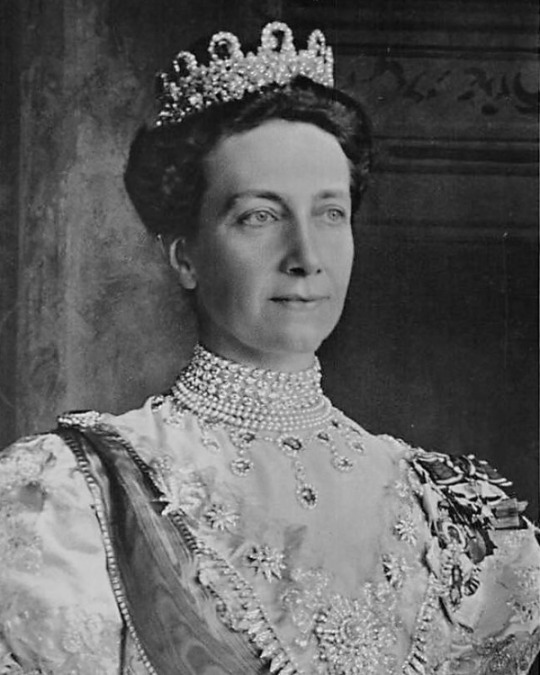



Royal Tiara Highlights: Swedish Sapphire Tiara
This tiara is apart of a parure that also includes a necklace, a pair of earrings, a brooch, and a set of hair ornaments. The tiara features diamond floral motifs topped by eleven sapphires and is extremely flexible - the tiara can be laid completely flat and the sapphires can be removed.
The set initially belong to Princess Augusta of Bavaria, the wife of Eugène de Beauharnais, the only son of Empress Joséphine of France. The parure was given to Augusta as a wedding present in 1806, possibly by Napoleon Bonaparte - Empress Joséphine’s husband. The set is believed to have been made by Marie-Étienne Nitot, Napoleon’s court jeweler. Eugène and Augusta’s oldest daughter, Joséphine, married the future King Oscar I of Sweden, eventually becoming Queen Josefina of Sweden. The parure has been in the Swedish vaults ever since.
via The Court Jeweller
80 notes
·
View notes
Text
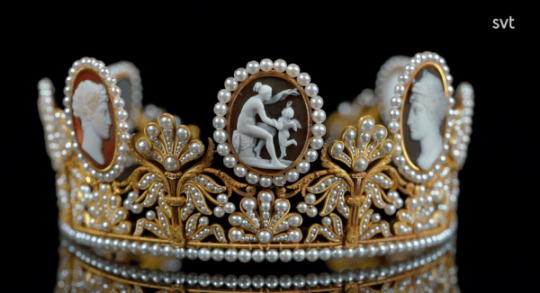
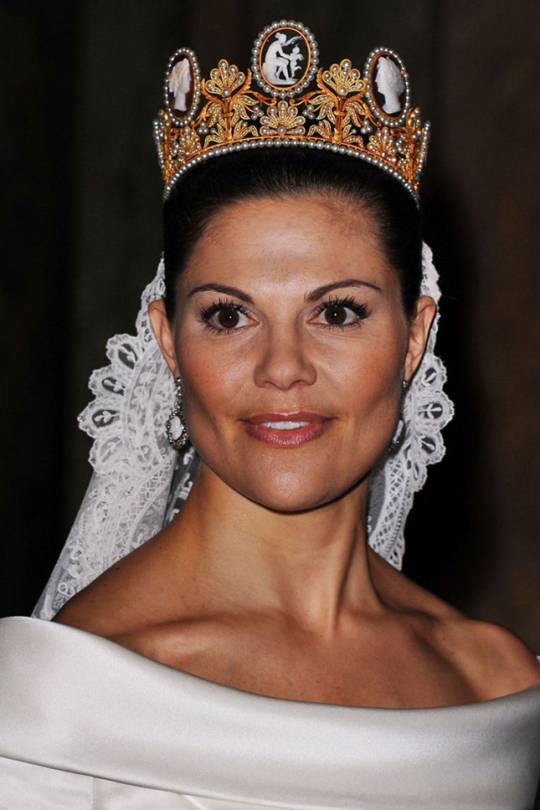
The unique gold, pearl, and cameo tiara from the Swedish royal vaults is packed with history and symbolism, from its initial creation story in Napoleonic France to the tales told by the individual cameos in the piece. Today, we’re unpacking both, with some fantastic close-up views of the parure.
The Cameo Parure, now owned by the Bernadottes of Sweden, was originally given by Napoleon I to Empress Josephine in 1809. The set includes a tiara, a necklace, a bracelet, and a pair of earrings. Today, the parure also includes a brooch, which is believed to be a slightly later addition to the suite. Above, Queen Silvia wears the entire parure—tiara, earrings, necklace, brooch, and bracelet (on her right wrist)—for the Nobel Prize ceremony in 2005.
The tiara made its way from imperial France to royal Sweden by a slightly circuitous route. It was inherited by Josephine’s son, Eugene de Beauharnais, and then passed on to his daughter, Queen Josefina of Sweden and Norway. She bequeathed the cameos to her daughter, Princess Eugenie; she bequeathed it to her nephew, Prince Eugen. He gave the set to Princess Sibylla, mother of the present king, as a wedding gift in 1932, and it has remained with the Bernadottes in Stockholm ever since.
With a central cameo depicting two gods of love, and a shape resembling traditional Scandinavian bridal crowns, it’s no surprise that this fragile, delicate heirloom has become the Bernadotte family bridal tiara. It’s been worn by two of the king’s sisters, Princess Birgitta and Princess Desiree, on their wedding days. It was also worn by his wife, Queen Silvia, at their wedding in 1976, and by their elder daughter, Crown Princess Victoria, at her wedding in 2010.
14 notes
·
View notes
Photo

People that have married in the Royal Families since 1800
Sweden
Joséphine of Leuchtenberg or Joséphine de Beauharnais (14 March 1807 - 7 June 1876)
6 notes
·
View notes
Photo


Some 1820s dresses (from top to bottom) -
1824 Young elegant lady by Eduard Friedrich Leybold (Christie's - Live Auction 2975 Lot 360). Fixed tears, edges, spots, and smudges w Pshop 3342X4205 @150 2.5Mj.
1826 Josefina Maximiliana Eugenia Napoleana, Queen of Sweden with her son by Frederic Westin (location ?). From tumblr.com/roehenstart 1280X1898 @72 587kj.
#1820s fashion#French restoration fashion#late Georgian fashion#Eduard Friedrich Leybold#short hair#bateau neckline#upper-puffed long sleeves#folded-ribbon bertha#waist band#close skirt#shawl#Queen Josefina#Frederic Westin#turban#dual sleeves
81 notes
·
View notes
Text
Holidays 10.23
Holidays
Aviator’s Day (Brazil)
Broken Diamond (Elder Scrolls)
Chulalongkorn Day (Rama V Day; Thailand)
Claire & Henry’s Wedding Day (Time Traveler’s Wife)
Day of the Macedonian Revolutionary Struggle
Doctor’s Day (Mexico)
Event Organizers Day
Frost Descends (Chinese Farmer’s Calendar)
iPod Day
Liberation Day (Libya)
Mole Day (Chemists)
Mother of Pearl Sunday [Sunday of Last Full Week]
National Aviation Day (Mexico)
National Croc Day
National One United Race Day
National Slap Your Irritating Co-Worker Day
Nemzeti ünnep (Hungary)
Paralegal Day
Paris Peace Agreement Day (Cambodia)
Peniamina Gospel Day (Niue)
Spam Jam (Hawaii)
Swallows Leave Capistrano Day
TV Talk Show Host Day
Ueno Tenjin Matsuri (Parade of Demons; Japan)
Vote Early Day
Food & Drink Celebrations
Boston Cream Pie Day
Canning Day (a.k.a. Canned Food Day)
National Canned Food Day (a.k.a. National Canning Day)
4th Sunday in October
Mother-In-Law Day [4th Sunday]
National Tight Ends Day [4th Sunday]
Pumpkin Day [Sunday before 31st]
World Mission Sunday [4th Sunday]
Feast Days
Allucio of Campugliano (Christian; Saint)
Amon of Toul (Diocese of Toul; Christian; Saint)
Anicius Manlius Severinus Boethius (Christian; Saint)
Bobby London Day (Church of the SubGenius; Saint)
Christmas (a.k.a. Feast of Señor Noemi, the Child Jesus; Apostolic Catholic Church)
Feast of the Most Holy Redeemer (Christian)
Festival of Forgotten Gods
Fontenelle (Positivist; Saint)
Giovanni da Capistrano (Christian; Saint)
Ignatios of Constantinople (Christian; Saint)
Island Heads (Muppetism)
James the Just (a.k.a. James, brother of Jesus; Lutheran, Episcopal Church (USA), Eastern Orthodox)
John Capistran (Christian; Saint)
Joséphine Leroux (Christian; Saint)
Navami [9th Day of Dashain]
Peter Pascual (Christian; Saint)
Romain (a.k.a. Romanus) of Rouen (Christian; Saint)
Servandus and Cermanus (Christian; Saint)
Severin of Cologne (Christian; Saint)
Strip for Your Lover Day (Pastafarian)
Surin (Christian; Saint)
Theodoret (Christian; Saint)
Lucky & Unlucky Days
Shakku (赤口 Japan) [Bad luck all day, except at noon.]
Premieres
Almost Blue, by Elvis Costello (Album; 1981)
The Black Parade, by My Chemical Romance (Album; 2006)
Dictionary of the Khazars, by Milorad Pavić (Novel, English Translation; 1989)
Dumbo (Animated Disney Film; 1941)
Elizabeth (Film; 1998)
Hello, by Adele (Song; 2015)
I Will Survive, by Gloria Gaynor (Song; 1978)
Life Is Beautiful (Film; 1998)
Live a Little, Love a Little (Film; 1968) [Elvis Presley #28]
Pleasantville (Film; 1998)
The Queen’s Gambit (TV Mini-Series; 2020)
Rehab, by Amy Winehouse (Song; 2006)
The Times They Are-A-Changin’, recorded by Bob Dylan (Song; 1963)
Trespass, by Genesis (Album; 1970)
Today’s Name Days
Oda (Austria)
Borislav, Ivan, Severin, Teodor (Croatia)
Teodor (Czech Republic)
Søren (Denmark)
Leevi, Liivi, Liivia, Liivika (Estonia)
Severi (Finland)
Jean, Simon (France)
Johannes, Severin, Uta (Germany)
Iakovos, Jacob (Greece)
Gyöngyi (Hungary)
Giovanni (Italy)
Daina, Dainis, Severins (Latvia)
Odilija, Ramvydė, Sanginas (Lithuania)
Severin, Sørene (Norway)
Iga, Ignacja, Ignacy, Jan, Marlena, Odilla, Roman, Seweryn, Teodor, Włościsław, Żegota (Poland)
Alojzia (Slovakia)
Juan (Spain)
Severin, Sören (Sweden)
Fifi, Josefina, Josepha, Josephina, Josephine, Josie, Pepita (USA)
Today is Also…
Day of Year: Day 296 of 2022; 69 days remaining in the year
ISO: Day 7 of week 42 of 2022
Celtic Tree Calendar: Gort (Ivy) [Day 23 of 28]
Chinese: Month 9 (Júyuè), Day 28 (Ji-You)
Chinese Year of the: Tiger (until January 22, 2023)
Hebrew: 28 Tishri 5783
Islamic: 27 Rabi I 1444
J Cal: 26 Shù; Foursday [26 of 30]
Julian: 10 October 2022
Moon: 3%: Waning Crescent
Positivist: 16 Descartes (11th Month) [Fontenelle]
Runic Half Month: Wyn (Joy) [Day 13 of 15]
Season: Autumn (Day 31 of 90)
Zodiac: Scorpio (Day 1 of 31)
Calendar Changes
Scorpio (The Scorpion) begins [Zodiac Sign 8; thru 11.22]
4 notes
·
View notes
Photo




Danish Ruby Tiara
Made in 1804 for Désirée Clary to wear to Napoléon’s coronation. In 1910, her husband, Jean-Baptiste Bernadotte, was elected Crown Prince of Sweden, and he eventually became King Carl XIV Johan of Sweden. She passed it down to her daughter-in-law, who became Queen Josefina of Sweden, who then gave it to her granddaughter, Princess Lovisa, when she married Crown Prince Fredrik of Denmark. Since then, it has remained in the Danish royal family.
153 notes
·
View notes
Photo


INTRODUCING ... THE PRINCESS OF SWEDEN
THE BASICS.
NAME: josefina katrin emelina iris oldenburg GENDER & PRONOUNS: female, she / her AGE: twenty - eight FC: kristine froseth, elizabeth lail, elizabeth olsen, any fitting female fc TITLES: princess of sweden; duchess of östergötland; member of the royal order of the seraphim; 2019 winner of the nobel peace prize
SWEDEN’S GOLDEN CHILD.
for josefina and theodor, the pressure has always been on. as children of the crown prince, and then as children of the king, they were raised under a microscope unlike any other. frederik and emelina did what they could for their children, trying to keep them out of the paparazzi’s eye as much as possible, but only so much could be done for the young prince and princess. especially when their grandfather died and left the crown to his son, all eyes were on the young royals. josefina has always worked very well under pressure, perhaps due to all the attention in her youth; one slip-up could result in mass scrutiny of herself and her family, so she learned how to always keep a smile, a calm manner, and a keen mind.
she was in a unique position as her parents’ spare – though she was never made to feel like the spare, and she was loved just the same as her brother – she had somewhat more freedom in her hobbies and how she spent her time, but she still had to be ready to rule should misfortune strike. she was tutored in history, politics, and law, just like her brother. and while she never grasped it quite as well as he did, she has a firm enough understanding to skirt by should she need to.
when their father died, josefina leaned heavily on theodor for support. the two became inseparable, even more than they had been before, and it was as much for theodor’s benefit as her own. she spent her days looking after her brother, making sure he ate and slept. in her adulthood, spent as it has been in hospitals and on military bases, her impeccable bedside manner and way of gentle, measured persuasion has been remarked upon more than once by her superiors. she attributes this to dealing with her brother, stubborn as he is, throughout their youth.
the oldenburgs have always been a military family, but theodor’s enlistment still blindsided josefina. she was only fourteen, and in fourteen years, she had not raised her voice at theodor. she had never needed to. but this was the one agreement they could not reach, the one compromise they couldn’t find. he was dead set on enlisting, and she was dead set against it. he went to war, and josefinia could do nothing to stop him. in his absence, she found her passion for medicine. it stemmed from deep fears that her brother would not return in one piece, some effort to have control of an uncontrollable situation. when he came home with a gunshot wound in his hip, josefina was glad for the connections she’d already forged, even at the tender age of eighteen. she was instrumental in helping him to walk again; without her there to encourage him, he’d never have managed.
in 2016, josefina enlisted in the military as a nurse. she traveled the world, gaining hands-on experience. the optics were good, and the fulfillment was even better. she gained great joy from helping those who needed it. throughout three years of service, she focused on protecting civilians, particularly children. she saved countless lives, and in 2019, her service was rewarded with a nobel peace prize.
josefina’s military service ended only last year, when she returned home to sweden to focus on internal affairs and to . now, she’s joining the other royals in the program at theodor’s request. he needs from his sister what she is always able to provide (at least, in his mind): a smile, a calm manner, and a keen mind.
TL;DR
josefina is the princess of sweden, the second daughter of the late king frederik iv and dowager queen emelina, and younger sister of crown prince theodor. she cares deeply for her people and family. she was in the public eye from a young age, and is beloved by her people. in 2019, she was awarded the nobel peace prize for her service as a military nurse. while she has not been as active in the international community as her brother, she is still a well-known name, and has worked as a diplomat and ambassador for sweden in the past. overall, she is gentle, unflappable, and clever, with a strong sense of duty, a loyalty to her people, and a desire to do what’s right.
MORE INFO
other connections in the rp: @catherinestuart (sister-in-law); @lucadansembourg & @wcndv (maternal first cousins); @ebbv, @vstridb, & @frejaedb (paternal second cousins)
family task: click here !
wanted connection for @highsocietyhq. please contact @theodcr before applying.
#royalty rp#skeleton rp#political rp#established rp#hshqadopt#gun tw#injury tw#death tw#military tw#FINALLY sucked it up and actually wrote this
11 notes
·
View notes
Text
The Princess Dona Maria Amélia Foundation






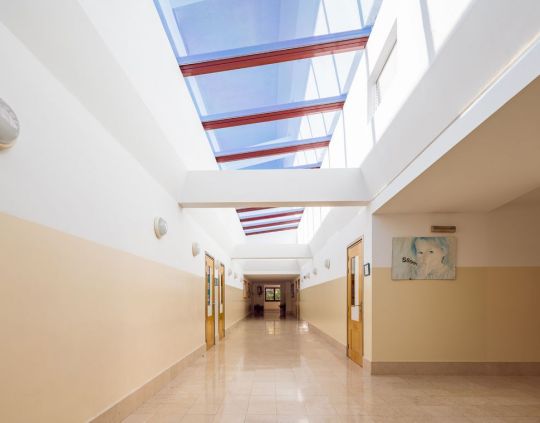
The Princess Dona Maria Amélia Foundation is a foundation under Portuguese law, established on March 23rd, 1877 by decision of the Swedish Crown after the Princess Dona Maria Amélia Hospice, an institution founded in 1853 for the treatment of pulmonary patients, was bequeathed by Empress D Amélia de Leuchtenberg, widow of Emperor D. Pedro I of Brazil (King D. Pedro IV of Portugal), to his sister D. Josefina, Queen of Sweden and Norway. The Foundation was created with the initial purpose of preserving and managing this historical legacy, perpetuating the work of Empress D. Amélia and the memory of her daughter, Princess D. Maria Amélia, in Madeira and Portugal.
4 notes
·
View notes
Photo

Lovisa Josefina Eugenia, Queen of Sweden, Amalia Lindegren
72 notes
·
View notes
Text
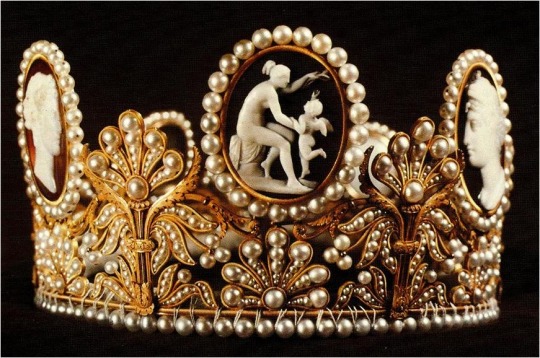

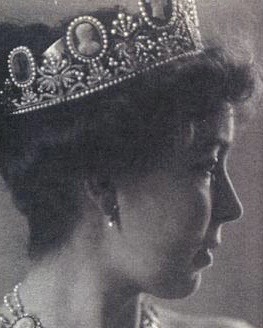


Royal Tiara Highlights: The Cameo Parure
The parure was created in 1804 for Empress Joséphine of France, probably made by Napoleon’s court jeweler Marie-Étienne Nitot. The set featured a grand tiara, a necklace, a bracelet and a pair of earrings.
Exactly what happened to the parure after Joséphine’s death is unclear. It is believed that the jewels ended up in the possession of her son Eugène as his daughter Joséphine of Leuchtenberg - future Queen Josefina of Sweden and Norway - was painted wearing the tiara multiple times. The set remains in the Swedish Royal Family and the tiara is constantly worn by the Bernadotte women on their wedding days.
via The Court Jeweller
#tiaras highlights#swrf#swedish royal family#queen silvia#crown princess victoria#royal jewelry#royal jewels#royal tiaras
42 notes
·
View notes
Text
Holidays 10.23
Holidays
Aviator’s Day (Brazil)
Broken Diamond (Elder Scrolls)
Chulalongkorn Day (Rama V Day; Thailand)
Claire & Henry’s Wedding Day (Time Traveler’s Wife)
Day of the Macedonian Revolutionary Struggle
Doctor’s Day (Mexico)
Event Organizers Day
Frost Descends (Chinese Farmer’s Calendar)
iPod Day
Liberation Day (Libya)
Mole Day (Chemists)
Mother of Pearl Sunday [Sunday of Last Full Week]
National Aviation Day (Mexico)
National Croc Day
National One United Race Day
National Slap Your Irritating Co-Worker Day
Nemzeti ünnep (Hungary)
Paralegal Day
Paris Peace Agreement Day (Cambodia)
Peniamina Gospel Day (Niue)
Spam Jam (Hawaii)
Swallows Leave Capistrano Day
TV Talk Show Host Day
Ueno Tenjin Matsuri (Parade of Demons; Japan)
Vote Early Day
Food & Drink Celebrations
Boston Cream Pie Day
Canning Day (a.k.a. Canned Food Day)
National Canned Food Day (a.k.a. National Canning Day)
4th Sunday in October
Mother-In-Law Day [4th Sunday]
National Tight Ends Day [4th Sunday]
Pumpkin Day [Sunday before 31st]
World Mission Sunday [4th Sunday]
Feast Days
Allucio of Campugliano (Christian; Saint)
Amon of Toul (Diocese of Toul; Christian; Saint)
Anicius Manlius Severinus Boethius (Christian; Saint)
Bobby London Day (Church of the SubGenius; Saint)
Christmas (a.k.a. Feast of Señor Noemi, the Child Jesus; Apostolic Catholic Church)
Feast of the Most Holy Redeemer (Christian)
Festival of Forgotten Gods
Fontenelle (Positivist; Saint)
Giovanni da Capistrano (Christian; Saint)
Ignatios of Constantinople (Christian; Saint)
Island Heads (Muppetism)
James the Just (a.k.a. James, brother of Jesus; Lutheran, Episcopal Church (USA), Eastern Orthodox)
John Capistran (Christian; Saint)
Joséphine Leroux (Christian; Saint)
Navami [9th Day of Dashain]
Peter Pascual (Christian; Saint)
Romain (a.k.a. Romanus) of Rouen (Christian; Saint)
Servandus and Cermanus (Christian; Saint)
Severin of Cologne (Christian; Saint)
Strip for Your Lover Day (Pastafarian)
Surin (Christian; Saint)
Theodoret (Christian; Saint)
Lucky & Unlucky Days
Shakku (赤口 Japan) [Bad luck all day, except at noon.]
Premieres
Almost Blue, by Elvis Costello (Album; 1981)
The Black Parade, by My Chemical Romance (Album; 2006)
Dictionary of the Khazars, by Milorad Pavić (Novel, English Translation; 1989)
Dumbo (Animated Disney Film; 1941)
Elizabeth (Film; 1998)
Hello, by Adele (Song; 2015)
I Will Survive, by Gloria Gaynor (Song; 1978)
Life Is Beautiful (Film; 1998)
Live a Little, Love a Little (Film; 1968) [Elvis Presley #28]
Pleasantville (Film; 1998)
The Queen’s Gambit (TV Mini-Series; 2020)
Rehab, by Amy Winehouse (Song; 2006)
The Times They Are-A-Changin’, recorded by Bob Dylan (Song; 1963)
Trespass, by Genesis (Album; 1970)
Today’s Name Days
Oda (Austria)
Borislav, Ivan, Severin, Teodor (Croatia)
Teodor (Czech Republic)
Søren (Denmark)
Leevi, Liivi, Liivia, Liivika (Estonia)
Severi (Finland)
Jean, Simon (France)
Johannes, Severin, Uta (Germany)
Iakovos, Jacob (Greece)
Gyöngyi (Hungary)
Giovanni (Italy)
Daina, Dainis, Severins (Latvia)
Odilija, Ramvydė, Sanginas (Lithuania)
Severin, Sørene (Norway)
Iga, Ignacja, Ignacy, Jan, Marlena, Odilla, Roman, Seweryn, Teodor, Włościsław, Żegota (Poland)
Alojzia (Slovakia)
Juan (Spain)
Severin, Sören (Sweden)
Fifi, Josefina, Josepha, Josephina, Josephine, Josie, Pepita (USA)
Today is Also…
Day of Year: Day 296 of 2022; 69 days remaining in the year
ISO: Day 7 of week 42 of 2022
Celtic Tree Calendar: Gort (Ivy) [Day 23 of 28]
Chinese: Month 9 (Júyuè), Day 28 (Ji-You)
Chinese Year of the: Tiger (until January 22, 2023)
Hebrew: 28 Tishri 5783
Islamic: 27 Rabi I 1444
J Cal: 26 Shù; Foursday [26 of 30]
Julian: 10 October 2022
Moon: 3%: Waning Crescent
Positivist: 16 Descartes (11th Month) [Fontenelle]
Runic Half Month: Wyn (Joy) [Day 13 of 15]
Season: Autumn (Day 31 of 90)
Zodiac: Scorpio (Day 1 of 31)
Calendar Changes
Scorpio (The Scorpion) begins [Zodiac Sign 8; thru 11.22]
1 note
·
View note
Photo

People that have married in the Royal Families since 1800
Sweden
Joséphine of Leuchtenberg or Joséphine de Beauharnais (14 March 1807 - 7 June 1876)
5 notes
·
View notes
Text
7 Art-Historical Treasures for Sale at TEFAF Maastricht
The European Fine Art Fair, better known as TEFAF, anchors the social calendar for any serious collector of antiquity, Old Master works, or fine jewelry (read: anyone serious about the finer things in life). The annual fair, open to the public March 16th through 24th, takes place in the MECC Maastricht, a conference center in the eponymous sleepy Netherlandish college town, and gathers 279 international dealers of art and antiques from around 21 countries. Now in its 32nd edition, TEFAF Maastricht expanded its modern and contemporary section, a shift in focus that speaks to the rapidly aging collector base it has relied on for so long. It might have been nice to see dealers teasing out the connections between modern, historical, and ancient artworks, but as in most fairs, each dealer is out for himself in the high-stakes sales environment. Still, I can’t complain—the pleasure of TEFAF lies in the many opportunities to view spectacular artworks and objects of all kinds that frequently live in private collections beyond public view.
Queen Josefina of Sweden’s natural pearl and diamond necklace
Symbolic & Chase, London
Booth 247

Queen Josefina of Sweden's natural pearl and diamond necklace. Courtesy of Symbolic & Chase, London.
The exceptional and aspirational jewelry presented at TEFAF makes one wonder if there are events grand enough today to merit such overindulgent showpieces. Still, a girl can dream, and Bond Street dealerSymbolic & Chase’s natural pearl–and–diamond necklace from the collection of Joséphine de Beauharnais, the 19th-century queen of Sweden and Norway, conjures immodest princess fantasies. For various environmental reasons, the gigantic, teardrop-shaped natural pearls that hang from the double strand of round gems can no longer be produced today. Their size and luster certainly befits their royal heritage, and the piece features in several of Josefina’s officialportraits. The accessory reinforces her power and youthful beauty, but “besides being immensely becoming to her looks,” art historian Diana Scarisbrick wrote for Sotheby’s in 2014, “the effect of this iridescence, while quite different from the brilliance of transparent stones, was also majestically imposing and transformed Josefina’s appearance from that of a mere mortal into that of a Queen.” If diamonds are more your thing, the dealer also has a whopping 114-karat yellow diamond necklace accompanied by Colombian emeralds and, yes, more pearls, designed by JAR.
Barry X Ball, Sleeping Hermaphrodite (2008–17)
Fergus McCaffrey, New York, Tokyo, and St. Barth
Booth 440

Barry X Ball, Sleeping Hermaphrodite, 2008–17. Courtesy of Fergus McCaffrey, New York, Tokyo, and St. Barth.
The undeniable hit of the fair (at least based on the hordes of photo takers)—and a much-needed shot of grandeur for the modern and contemporary section—is Barry X Ball’s “Masterpieces” series, robot-generated recreations of iconic sculptures from the annals of art history, presented by Fergus McCaffrey. Ball’s version of the Louvre’s famous Hellenistic sculpture, Sleeping Hermaphrodite (ca. 3rd–1st centuries B.C.E.), appears in translucent pink Iranian onyx, a fitting millennial-pink homage to a sensual icon of intersex identity. Last year,Artsy named Ball one of seven artists “smashing our expectations of what marble can be,” an honorific confirmed by his utterly 21st-century approach to traditional works of art. After taking hundreds of images of the original sculpture, Ball creates a 3D scan, uses a CNC milling technique to carve the stone, and then polishes it by hand. This might at first seem like a cheap trick (if hand-carving was good enough for Michelangelo), but Ball’s methods reject high-brow notions of originality and authenticity, and—perhaps to the chagrin of some historians—attempt to improve upon or “perfect” what many would consider already-perfect masterpieces. The striking Hermaphrodite is on loan from the artist, but two busts nearby—Envy (2008–19) and Purity (2008–18)—are available for $425,000 apiece.
Atwonzen, or Magnificient Beaded Head, from the Dschang Region, Cameroon (ca. 1700–1800)
Martin Doustar, Brussels
Booth SC 4

Atwonzen, or Magnificient Beaded Head, Dschang Region, Cameroon, c. 1700–1800.
The Brussels-based art dealer Martin Doustar, who specializes in ancient and primitive works, presents a selection of rare and spectacularly colorful artifacts. This beaded head from Cameroon is one of only seven known atwonzens from the Bamileke culture (one is in the collection of the De Menil Foundation, another is in the Musée du Quai Branly, and the rest are in private hands). Bill Ziff, the prominent 20th-century collector of primitive art, was the owner of this finely wrought piece, composed of glass beads and cowry shells. The complexity of the beadwork and its “striking expression of death,” Pierre Harter writes in his 1986 volume, Arts Anciens du Cameroun, make this mask a particularly fine example of the genre. And it has a price tag to match: €160,000, or a little more than $180,000. Prized tokens of power, such pieces were carefully constructed by the best royal artisans to be worn by chieftains on their belts; the care with which the mask was stored has left it remarkably preserved.
Kees van Dongen, Plumes blanches (1910–12)
Dickinson, London and New York
Booth 402

Plumes blanches, 1910-1912. Kees van Dongen DICKINSON
Throughout the fair, I found the society women populating Kees van Dongen’s portraits staring out at me from their muddy canvases. The smattering of works by the French-Dutch painter on view at various gallery booths seem to foretell a coming moment for an artist frequently overshadowed by Fauvist and Die Brücke peers such as Henri Matisse and Ernst Ludwig Kirchner. The two lovely Van Dongen paintings in Dickinson’s presentation are an homage to the female form. Nu fauve a la jarretière rouge (1905–07) shows a pretty, if somewhat predictable, odalisque rendered in broad green-and-pink brushstrokes. It’s the unknown woman in Plumes blanches (1910–12), however, that captures Van Dongen’s knack for decidedly modern, emotionally complex portraits of upper-class women. The dealer could not confirm the identity of the sitter, who looks out at the viewer almost confrontationally, her exceptionally plumed hat adding to her regality. Yet her dark skin suggests that she may be of North African descent, a hypothesis supported by the recent trip the artist had taken to Algeria. Nevertheless, she is a showstopper; her mysterious air and dramatic accessories can be yours for $6.5 million.
Wall Hanging (ca. 1st half of the 18th century), probably Mexico
Eguiguren Arte de Hispanoamérica, Buenos Aires
Booth 153

Wall Hanging (detail), ca. 1st half of the 18th century.

Wall Hanging, ca. 1st half of the 18th century.
At the very back of the Latin American art dealer Eguiguren’s booth, which prominently features antique silver, is an intricately embroidered wall hanging of astonishing quality. The background, composed entirely of flattened silver wire coiled around silk thread, lends it a rich opulence, which wonderfully reflects light. The painterly, decorative elements of the work—Rococo symmetry and flower motifs inspired by Indian chintzes, textiles then heavily imported into Europe—speak to a global colonial history marked by the craze for ornate splendors. A coat of arms surmounted by an open crown and mitre in the work’s center suggests that the costly commission was for a high-ranking bishop. Eguiguren originally dated the wall hanging to the late 18th century, but TEFAF officials believe it hails from the first half of the century, a correction that makes the beautiful condition of the piece even more worthy of its €300,000 (about $340,000) valuation.
Cradle (1907–08), designed by Josef Hoffmann and executed by J. & J. Kohn
bel etage, Vienna
Booth 606

Josef Hoffman, Cradle, 1907–08, executed by J. & J. Kohn. Courtesy of bel etage, Vienna.

Josef Hoffman, Cradle, 1907–08, executed by J. & J. Kohn. Courtesy of bel etage, Vienna.

Josef Hoffman, Cradle, 1907–08, executed by J. & J. Kohn. Courtesy of bel etage, Vienna.
Moms of a certain social standing know that we live in an era in which discreet wealth is the new status symbol, a trend encapsulated by the inexplicably expensive clogs that have quickly become part of the official uniform of a certain subset of Brooklyn mothers. It’s to this group that I recommend Josef Hoffmann’s deceptively simple, perfectly balanced cradle on offer from Vienna-based gallery bel etage. For a cool €130,000 (approximately $147,000), you can take home the fully functional and perfectly engineered bent beechwood crib by the influential avant-garde designer. In keeping with the ethos of the Vienna Secession and Wiener Werkstätte, groups dedicated to elevating the designs of useful, everyday objects,many of Hoffmann’s furniture and applied arts have been widely copied and distributed. Yet this piece, a rare example of his work for children, won’t appear in the houses of jealous friends: Only one other iteration of the cradle is known, and it lives in permanent stasis at the Berlin Bröhan Museum (that model, however, lacks this one’s charming curtain fixture).
The Anna Maria Trip Dolls’ House (ca. 1750–60)
John Endlich Antiquairs, Haarlem
Booth 235

The Anna Maria Trip Dolls’ House, c. 1750–60. Courtesy of John Endlich Antiquairs.

The Anna Maria Trip Dolls’ House, c. 1750–60. Courtesy of John Endlich Antiquairs.

The Anna Maria Trip Dolls’ House, c. 1750–60. Courtesy of John Endlich Antiquairs.
The voyeuristic pleasure of dollhouses and the confused disbelief of seeing finely rendered objects in a miniature scale commingle in Anna Maria Trip’s sumptuous model from the mid-18th century. The fully furnished three-story house offers a revealing glimpse into the world—and worldly possessions—of the well-to-do in the Netherlands during a time of extreme luxury and social ambition. Splendid dollhouses such as this one were not meant for children to play with; they were instead displayed as wünderkammer to entertain visitors and to show off their owners’ excellent taste. Here, the elegantly appointed rooms sportthe chic chinoiserie styles popular at the time, and are decorated with silk-upholstered furniture, real miniature paintings in gilt-bronze frames, and an unusually large collection of objects executed in silver. In an age of short attention spans, a doll house as intricate as this one invites and rewards prolonged looking. The dealer said that a foundation purchased the work, and it will be on display in a Dutch museum.
from Artsy News
0 notes